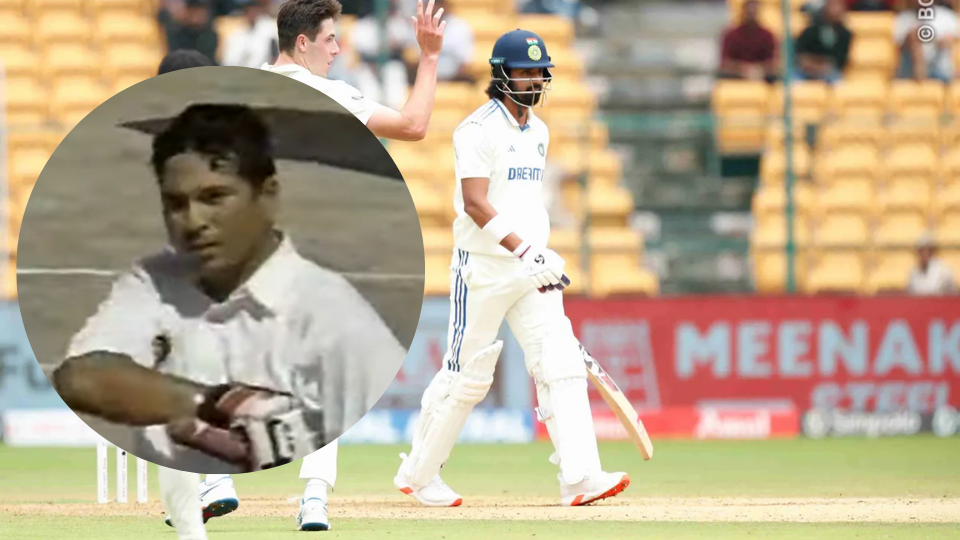
Atreyo Mukhopadhyay in Bengaluru
Remember the India-New Zealand Test in Mohali in 1999? Batting first, the home team, boasting of Sachin Tendulkar, Rahul Dravid and Sourav Ganguly, was all out for 83. The innings lasted 27 overs. In Bengaluru against the same team this time, the Indians were shot out for 46, in 31.2 overs.
There is a reason for going back to the Test in Mohali. Indian didn’t lose that game. Rather, they hauled themselves back to a position of winning it by posting 505/3 declared in the second innings. Tendulkar, the skipper, and Dravid scored hundreds. Devang Gandhi, Sadagopan Ramesh and Ganguly made half-centuries. Given a target of 374 to win, the visitors escaped to draw by making 251/7 in the second essay.
Coming back to another Test match played in October against the same team, this current Indian lot can perhaps draw inspiration from that Mohali match. There must not be many precedents of a team drawing or winning after getting bowled out for less than 50 in the first innings of a Test match. But this bunch has to believe that it can salvage something in the second dig.
At 180/3, New Zealand are already ahead by 134 runs. If they make a hundred more, it would give them a potentially match-winning lead. Even though this has effectively become a four-day Test, there is enough time to force a result if the weather doesn’t play spoilsport again. The odds are heavily in favour of the visiting team which made the ball talk in favourable conditions for bowling.
After bizarre call to bat first in overcast and damp conditions and the humiliation of getting out for the lowest ever total in home Tests, India captain Rohit Sharma admits it was a mistake. @atreyom ✍️#INDvsNZ https://t.co/eL2lljaLQe
— RevSportz Global (@RevSportzGlobal) October 17, 2024
Having said that, the Indians must do something to prevent that outcome. They may not be successful considering the adversity at the moment, but they have to restore something. And what do they need to do for that? Bring some clarity in mind while selecting shots and the batting order.
Rohit Sharma, Sarfaraz Khan and KL Rahul among the specialist batters were out to deplorable shots. The skipper charged at Tim Southee and tried a mighty heave when the situation demanded caution. Sarfaraz tried to flex his muscles against Matt Henry without getting near the pitch of the ball before settling down at the crease. Rahul paid the price of fishing outside leg-stump against William O’Rourke.
The pitch had everything for the fast bowlers, the conditions were damp after a few days of rain and it was overcast. The elements were loaded in favour of the bowlers. Yet, several key Indian batters made the task easier for New Zealand by attempting shots those were not there. An hour or two later, after getting their eye in, these would have been on. Not when they attempted those.
It’s unlikely that India will change the batting order in the second innings, but having Sarfaraz at No. 4 was a surprise. It was prompted by the absence of Shubman Gill all right, but Sarfaraz doesn’t bat in that position in first-class cricket. For Mumbai, he is the designated No. 6. In his five previous Test innings, he had played at No. 6 four times and at No. 5 once. No.4 is a different ball game for him.
Even if batting order is a debatable matter, with pros and cons on both sides, shot selection is not like that. Some of the batters caused their own downfall by not showing discretion. This is something that they cannot afford in the second innings. They have to show respect to this organised New Zealand attack and play accordingly.
At this venue in 2017, India had beaten Australia in a must-win game after conceding a lead of 87 runs in the first innings. Rahul was one of the protagonists in that come-from-behind effort back then. This team has Mohali of 1999 and Bengaluru of 2017 to look up to as inspiration.